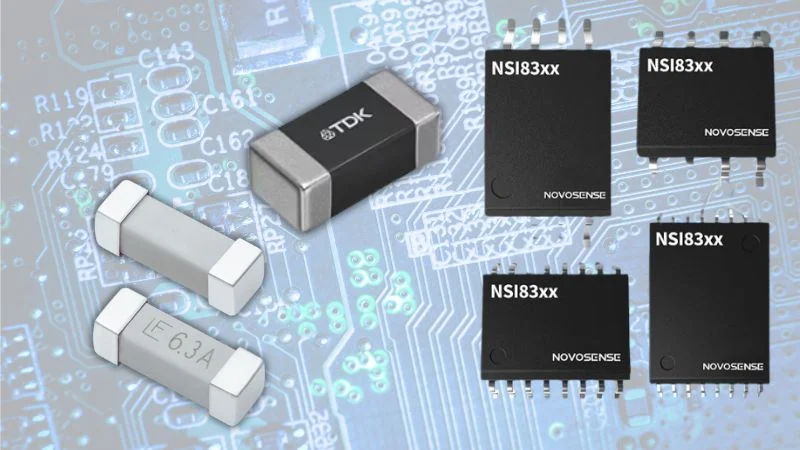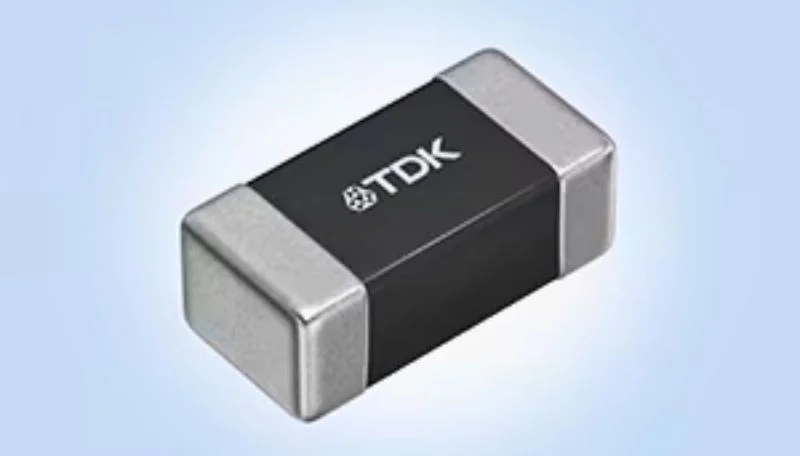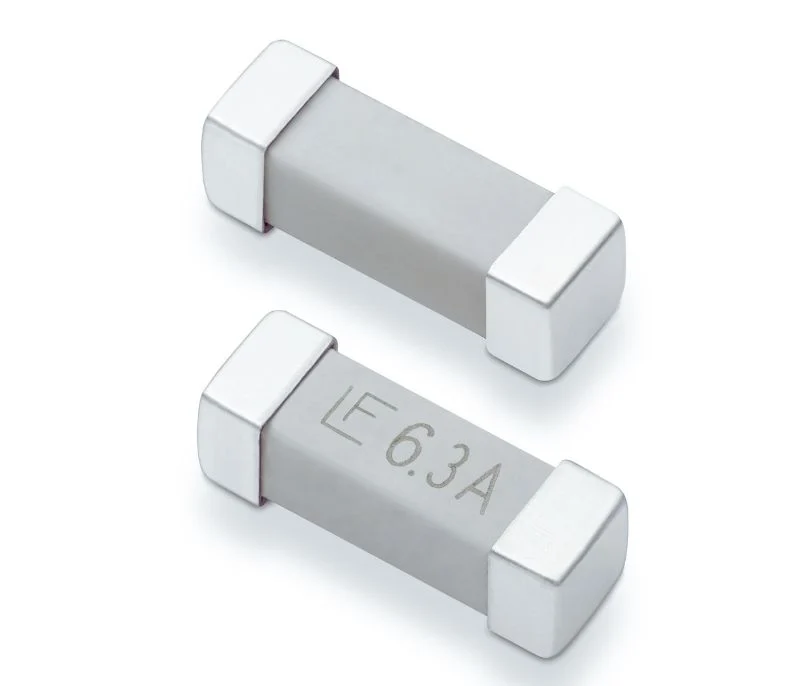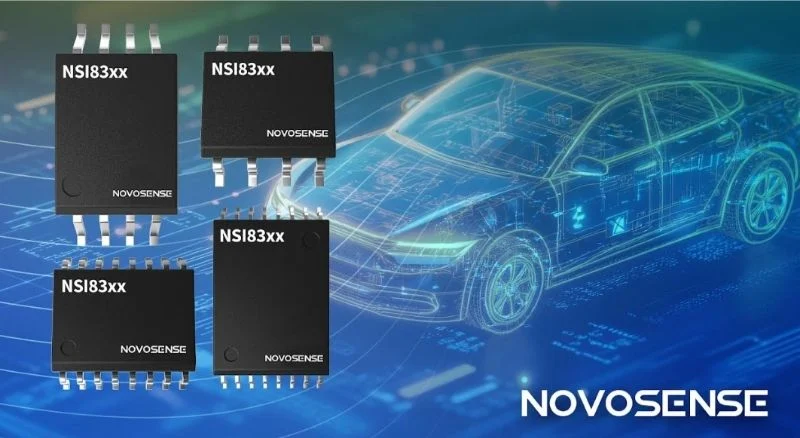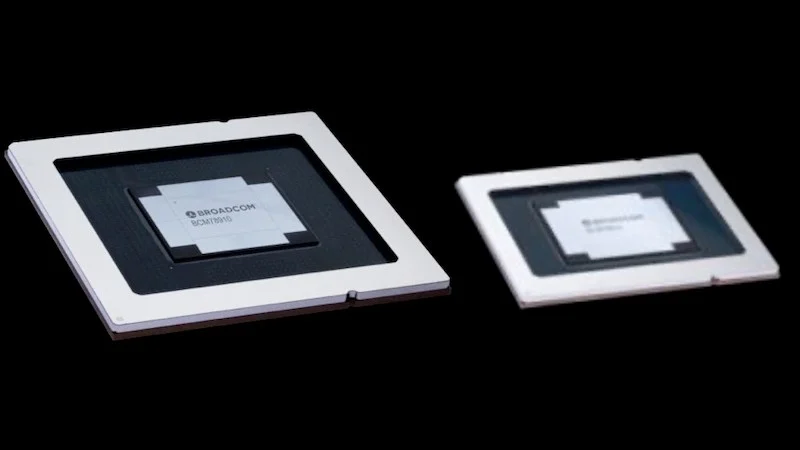TDK, Littelfuse, and Novosense have released components targeting scalability, thermal resilience, and EMI issues.
As power applications push toward higher current densities and switching frequencies, traditional components are plagued with scaling limitations in thermal endurance and electromagnetic compliance. At the same time, board space remains constrained. These pressures have driven the demand for components that integrate more functionality into smaller footprints without compromising safety.
TDK, Littelfuse, and Novosense have each released power components that meet these demands for various applications.
Power components. Adapted from images used courtesy of TDK, Littelfuse, and Novosense
TDK’s Multilayer Chip Beads
TDK introduced its MPZ1608-PH series, which expands the performance ceiling of its multilayer chip beads by offering an 8 A rated current in a 1608-size footprint. According to TDK, this current handling marks the highest in the industry for power line noise suppression components of this form factor. The design refines both the internal material composition and the bead’s geometric structure.
TDK’s MPZ1608-PH series. Image used courtesy of TDK
The major benefit is reduced component count. Most circuits exceeding 8 A typically require two beads in parallel, which introduces current imbalance and design complexity. By supporting 8 A through a single component, the MPZ1608-PH series reduces the number of components and halves the PCB footprint relative to conventional parallel configurations. And, with a low maximum DC resistance of 4 mΩ and a nominal impedance of 22 Ω at 100 MHz, the beads maintain effective noise suppression without introducing substantial loss. The rated current remains valid up to 85°C and derates to 5 A at 125°C.
Littelfuse’s 415 Series Fuse
Littelfuse’s new 415 Series fuse is a time-lag surface-mount device rated for 277 VAC and packaged in a 15 mm x 5 mm form factor. Designed to handle high fault current conditions in industrial and commercial circuits, it offers a high interrupting rating of 1500 A at 277 VAC or 250 VDC. The fuse construction integrates a ceramic body with silver-plated copper alloy end caps to improve thermal durability and electrical performance. This reliability is substantiated by compliance with UL/CSA/NMX 248-1/-14 and EN 60127-1/-7 standards.
The 415 Series fuses. Image used courtesy of Littelfuse
From a performance perspective, the fuse's time-lag characteristic is defined by a relatively high I^2t value, ranging from 3.6 A^2s at 1 A to 200 A^2s at 6.3 A. Cold resistance ranges from 0.400 mΩ to 0.0168 mΩ across the same current range, with the device operating safely across a -55°C to 125°C temperature range with proper derating. The 415 Series also passed mechanical shock up to 100 Gs, vibration from 10 to 55 Hz, is proven moisture resistant to MIL-STD-202, and is rated as MSL 1 per J-STD-020.
Novosense NSI83xx
Novosense has released its NSI83xx series of automotive-grade digital isolators meant to deliver reinforced capacitive isolation in high-frequency, high-voltage environments such as SiC-based traction inverters and battery management system architectures. These digital isolators achieve reinforced insulation ratings exceeding 10 kVrms and provide a common-mode transient immunity of 200 kV/μs. The devices maintain long-term stability, offering lifespans beyond 30 years under standard automotive conditions, and deliver compliance with AEC-Q100 qualification to guarantee reliability across harsh operating environments.
Novosense’s automotive digital isolators. Image used courtesy of Novosense
According to Novosense, the NSI83xx architecture reduces electromagnetic interference by integrating optimized shielding and layout techniques to achieve more than 10 dB of headroom against CISPR 25 Class 5 standards. This reduction in EMI margin contributes to system-level noise immunity and allows designers to meet automotive EMI requirements without complex external filtering. By minimizing susceptibility to power noise and eliminating external opto-isolation circuitry, the NSI83xx unlocks more compact and efficient system layouts.
Novosense also introduced the NSI67x0 smart isolated gate driver and the NSM201x-P Hall-effect current sensor series in the European markets.
Design Simplicity Through Granular Developments
Component-level improvements rarely draw widespread attention, yet they often drive the most meaningful gains in system architecture. When discrete devices reduce board count, improve EMI margins, or extend thermal resilience, they change what designers consider feasible at the system level. TDK, Littelfuse, and Novosense each focus on this incremental reshaping of power design limits, and each points to a growing industry reliance on smarter components rather than solely on system redesign to meet evolving application demands.


